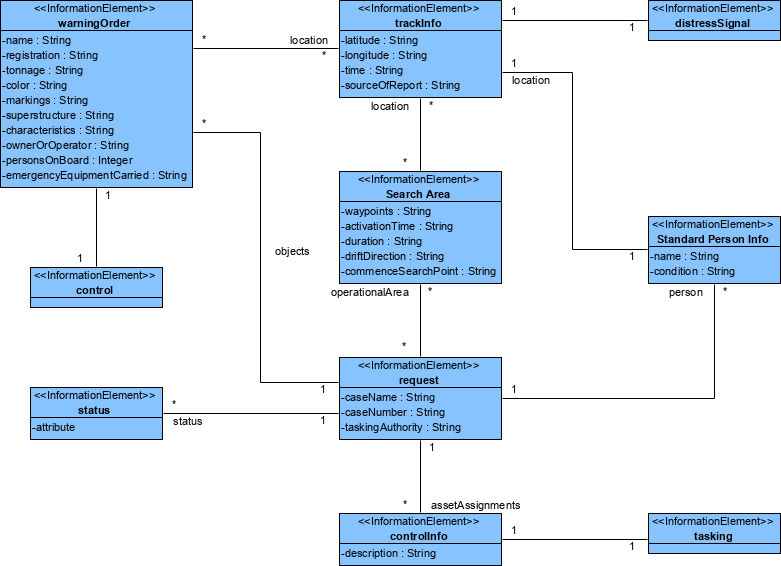The DIV-1 addresses the information concepts at a high-level on an operational architecture.
The DIV-1 is used to document the business information requirements and structural business process rules of the architecture. It describes the information that is associated with the information of the architecture. Included are information items, their attributes or characteristics, and their inter-relationships.
The intention is that DIV-1 describes information or data of importance to the business (e.g., information products that might be referred to in doctrine, SOPs, etc.) whereas the DIV-3 Physical Data Model describes data relevant at the system-level.
Usage
The intended usage of the DIV-1 includes:
- Information requirements
- Information hierarchy
Product Description
The DIV-1 is a Class Diagram that models the Architectural Description’s information classes and the relationships among them. For example, if the architecture effort is describing missile defense, some possible information classes may be trajectory and target with a relationship that associates a target with a certain trajectory. The DIV-1 defines each kind of information classes associated with the Architectural Description scope, mission, or business as its own Entity, with its associated attributes and relationships.
Creating a Conceptual Data Model
To create a Conceptual Data Model:
- Click on Conceptual Data Model in the Action Artifact area, and then select Create New Diagram.
- Type the diagram name and press Enter.
- A blank diagram is created and you can start constructing the view. You can create InformationElements. Connect elements with Associations.

DoDAF in Visual Paradigm
The DoDAF is brought to you by Visual Paradigm, a full-featured development platform. Visual Paradigm provides an easy-to-use, model-driven DoDAF tool that supports the development of DoDAF 2.02 views and models. You can create integrated DoDAF products and generate architectural documents that facilitate organizations to efficiently coordinate enterprise architecture initiatives.